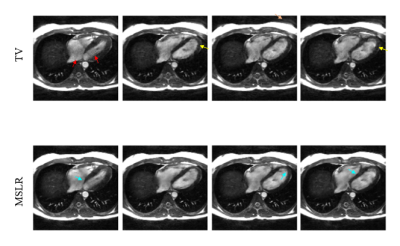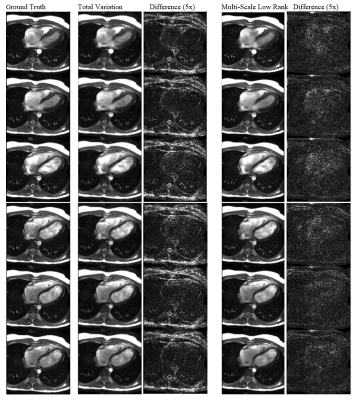Anjali Datta1, Dwight Nishimura1, and Corey Baron2
1Electrical Engineering, Stanford, Stanford, CA, United States, 2Medical Biophysics, Western University, London, ON, Canada
1Electrical Engineering, Stanford, Stanford, CA, United States, 2Medical Biophysics, Western University, London, ON, Canada
Multi-scale low-rank reconstruction recovers high-quality phase-cycle images from a highly-undersampled frequency-modulated bSSFP cardiac cine sequence. It also facilitates estimation of a time series of B0 maps from the same data, which are used to combine the phase-cycles into the cine.

Field-map-combined
images for selected cardiac phases. The TV reconstructions have near-band-flow-related
streaking artifacts (red arrows) and undersampling artifacts (peach
arrow). In addition, some hyperintensities (yellow arrows) persist, possibly from using noisier field maps for
phase-cycle combination. The MSLR reconstructions have smoother blood signal since flow artifacts were localized to near
the bands, which were then removed by field-map combination. In addition, both blood-myocardium boundaries
(cyan arrows) and background structures appear sharper.

Reconstructions
from the inverse-gridded and retrospectively undersampled dataset. Six cardiac phases evenly spaced through the cardiac
cycle are shown. The phase cycles were
root-sum-of-squares combined. Multi-scale
low rank results in sharper images and better removal of undersampling
artifacts (e.g., in the background) than total variation.